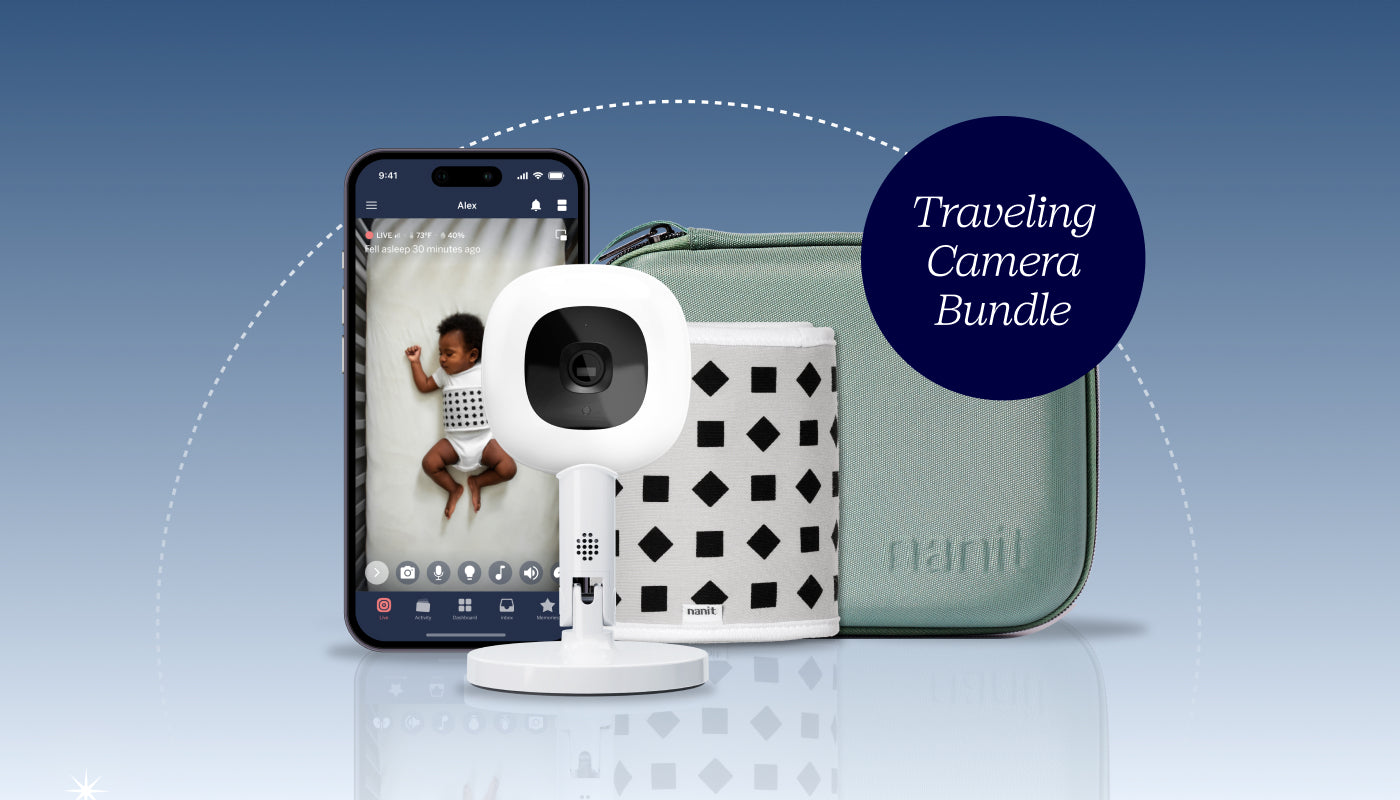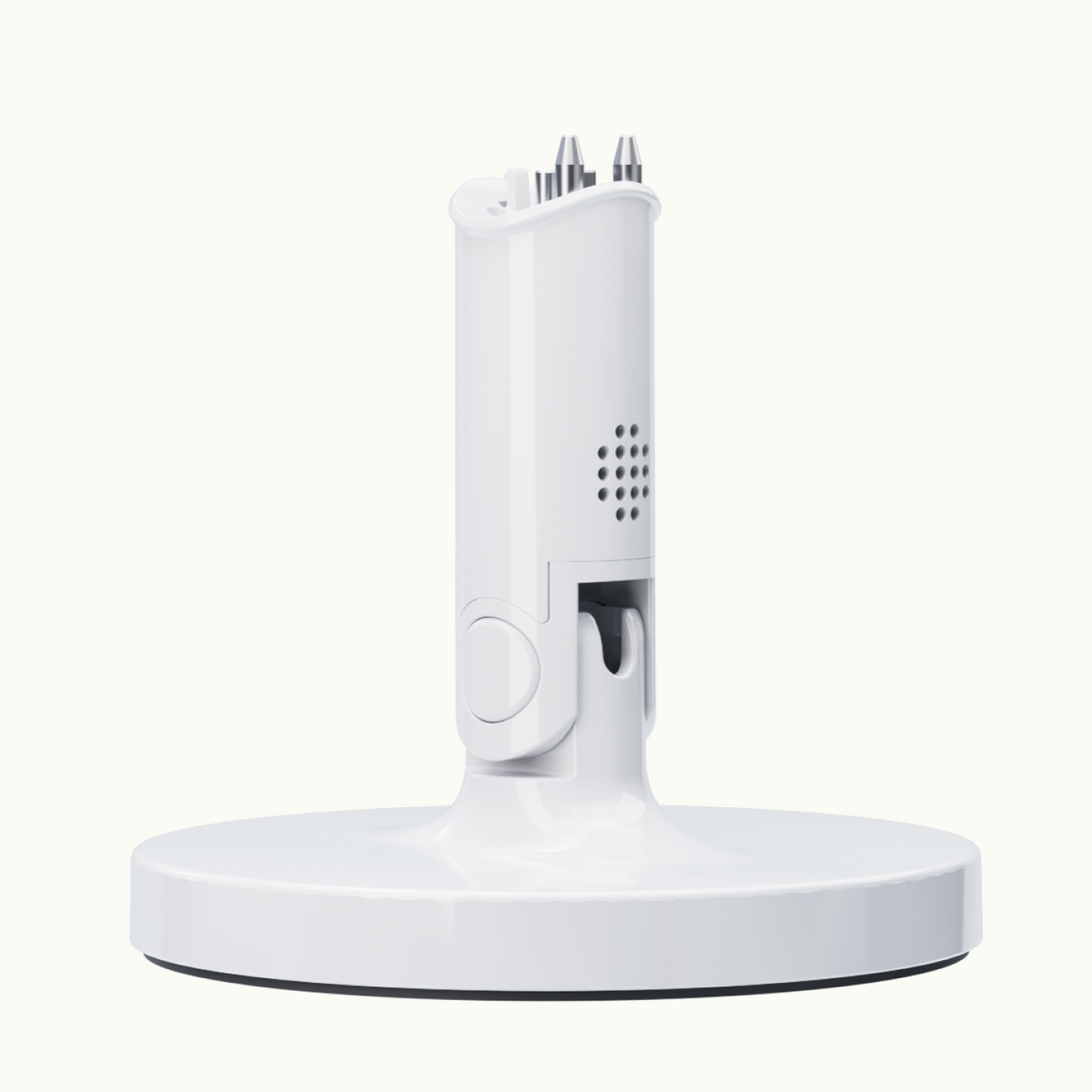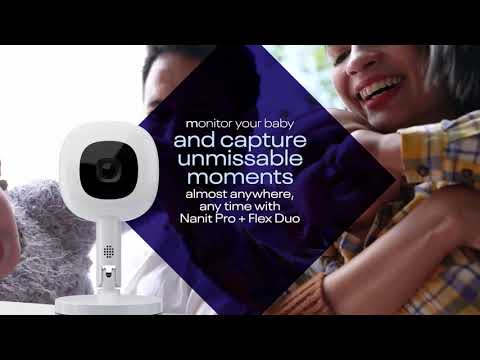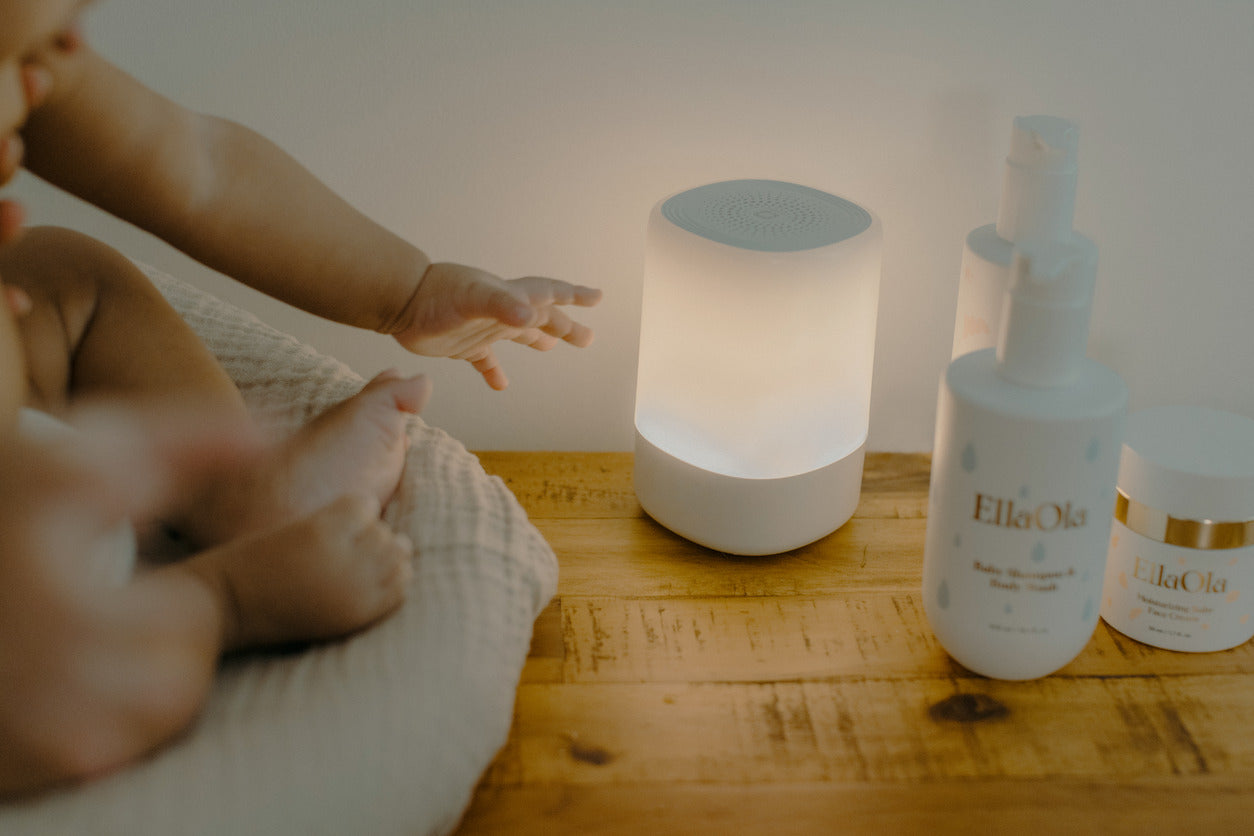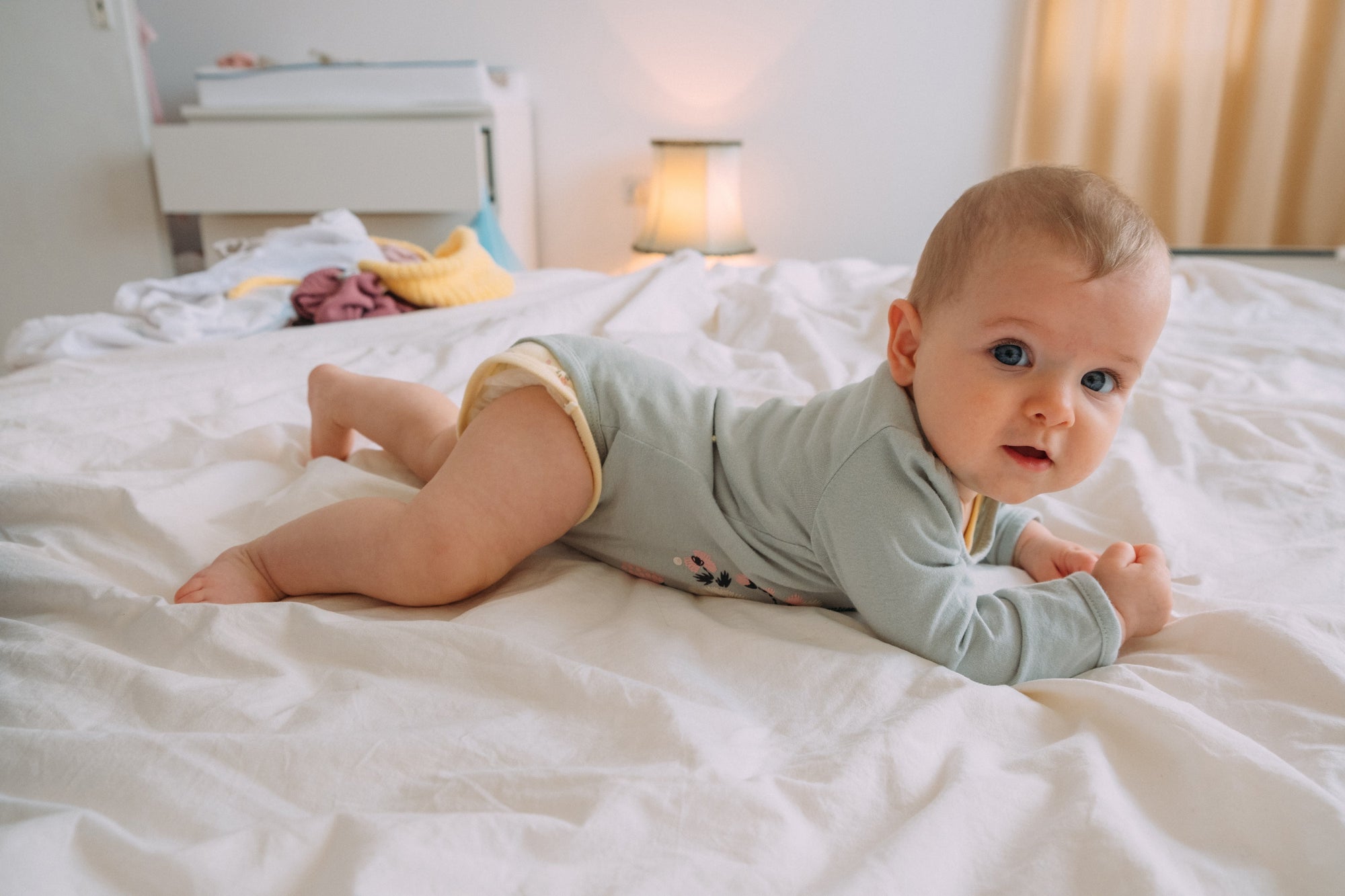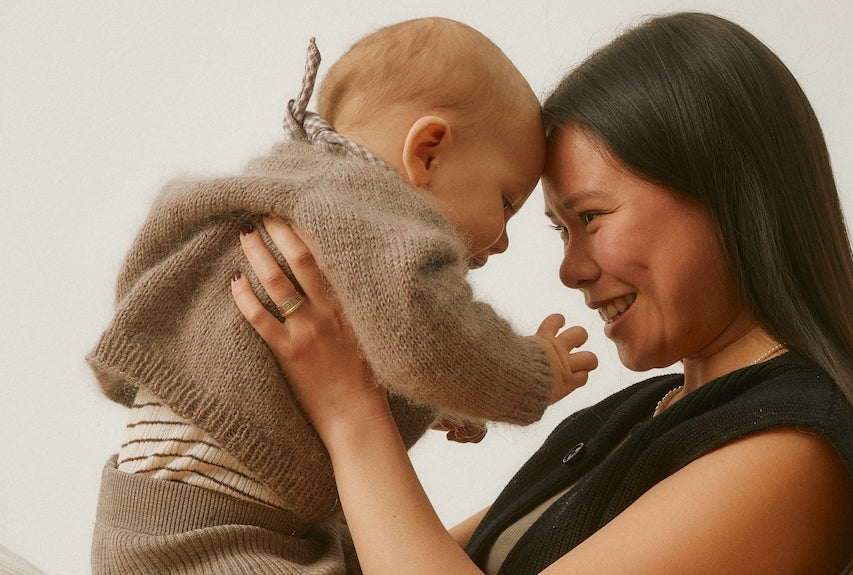There’s no one right way to help calm your baby. As a parent, you’ll probably try a few different tricks for comforting your baby before bedtime or during a fussy moment. It can help to have some supportive tools ready for when you need a little extra assistance.
White noise can be an incredibly useful way to create a tranquil environment to relax your baby. Here, we offer several ways you can use white noise for baby’s soothing and sleep routines.
What is white noise?
White noise is a combination of all frequencies discernible to the human ear. The result is a soothing static that can calm both adults and babies. The gentle “shhh” noise you might make to comfort your baby is a great example of white noise. It’s especially powerful because white noise has a noise-canceling effect on outside sounds, which makes it a helpful sleep aid.
Why do babies respond to white noise?
It may seem counterintuitive, but a fully quiet environment can be startling to an infant. They’ve spent the last nine months in utero hearing plenty of background noise. White noise can help ease this transition and mimic the ambient sounds your baby was exposed to in the womb. By imitating the kind of noise your baby has grown accustomed to, you can help trigger their innate calming reflex.
The benefits of white noise for baby
The serene environment white noise creates can help babies doze off faster and stay asleep longer. And it’s not just parents’ intuition or observation: Science backs this up.
A Nanit Lab study compared babies who slept with white noise all night with babies who used white noise at the beginning of bedtime. The babies with a full night of white noise had longer sleep stretches by almost two hours!
Since white noise can also activate a baby’s calming response, it can be a great baby gadget to supplement a parent’s soothing efforts. If you need some extra support when your baby is having a fussy moment, white noise can be just the ticket.
3 ways white noise helps baby
White noise can be an effective baby soothing mechanism in a few situations:
Sleeping and sleep training
Studies show that a consistent bedtime routine at the same time of night for at least five nights a week can increase your baby’s sleep duration by an hour. To help your baby peacefully drift off to sleep, make a habit of playing white noise right after tucking them in. As they become accustomed to the sound of soft static at bedtime, they may start to get the cue that it’s time to visit slumberland. Since we know white noise can be a useful sleep aid, its use can also help tremendously with baby sleep training.
Colic
The relaxing effects of white noise can also help ease a colic episode. A 2017 study found that when compared with other non-medicinal calming methods, white noise was the most effective at soothing colicky babies. In contrast to babies who were rocked back and forth, those who had colic and were played white noise cried less and slept more.
Fussing
White noise can give you an extra hand when your baby simply can’t settle down. You can play white noise to match the volume of your little one’s crying, which can turn on their inherent calming reflex. If the white noise lulls your baby to sleep, you can turn it back down to the volume they usually sleep at.
What are the different types of white noise for baby?
White noise occurs in low and high pitch forms, but low pitch white noise is what can help with baby calming. The low hum of a fan can provide the comforting buzz you’re looking for, or you can use a white noise machine for your routine.
When is the best time to use white noise for baby?
White noise is best used at specific times rather than playing in the background all day long. That’s because your baby needs to adjust to the natural sounds of their environment while reinforcing the connection between white noise and calm.
It’s a good idea to incorporate white noise into all sleeping routines, including both bed and naptime, to establish consistent baby sleep patterns. Leave your white noise machine on for the entire night several feet away from baby’s crib or bassinet, with the volume set to around 50 decibels. This decibel level is perfectly safe for baby.
If you incorporate white noise to soothe your baby during the day, this routine can be a little harder to plan. You can’t always predict when your baby is about to have a fussy moment. But if you notice they’re crankier at certain times, you might want to try adding white noise. For example, if your baby gets especially fussy during diaper changes, see if playing white noise calms them down.
Other sleep aids that can help soothe baby
There are a few other ways you can activate the calming reflex to help your baby sleep easier. Gentle rocking back and forth can relax your baby as they also mimic motions in the womb. Swaddling can also help your baby feel safe and calm. And soft, dim lighting can also signal that it’s night night time.
All of these methods can be used together with white noise to promote restful sleep. White noise machines such as the Nanit Sound and Light use soothing sounds and tranquil lighting to help encourage a healthy sleep routine.
Support calm routines with white noise for baby
If you’re working on establishing a bedtime routine, white noise can be a signal to your baby that it’s time to wind down. The peaceful humming of white noise can make it easier for your baby to stay asleep, so your whole family can get a good night’s rest. And the soothing effect of white noise can also relieve your baby’s discomfort in fussy moments or episodes of colic.
If you think white noise might benefit you and your baby, try incorporating it into your daily routines. With the right white noise tools, you may notice your baby relax once they hear that soothing serene static. And then, you’ll get the extra sleep you need, too.
